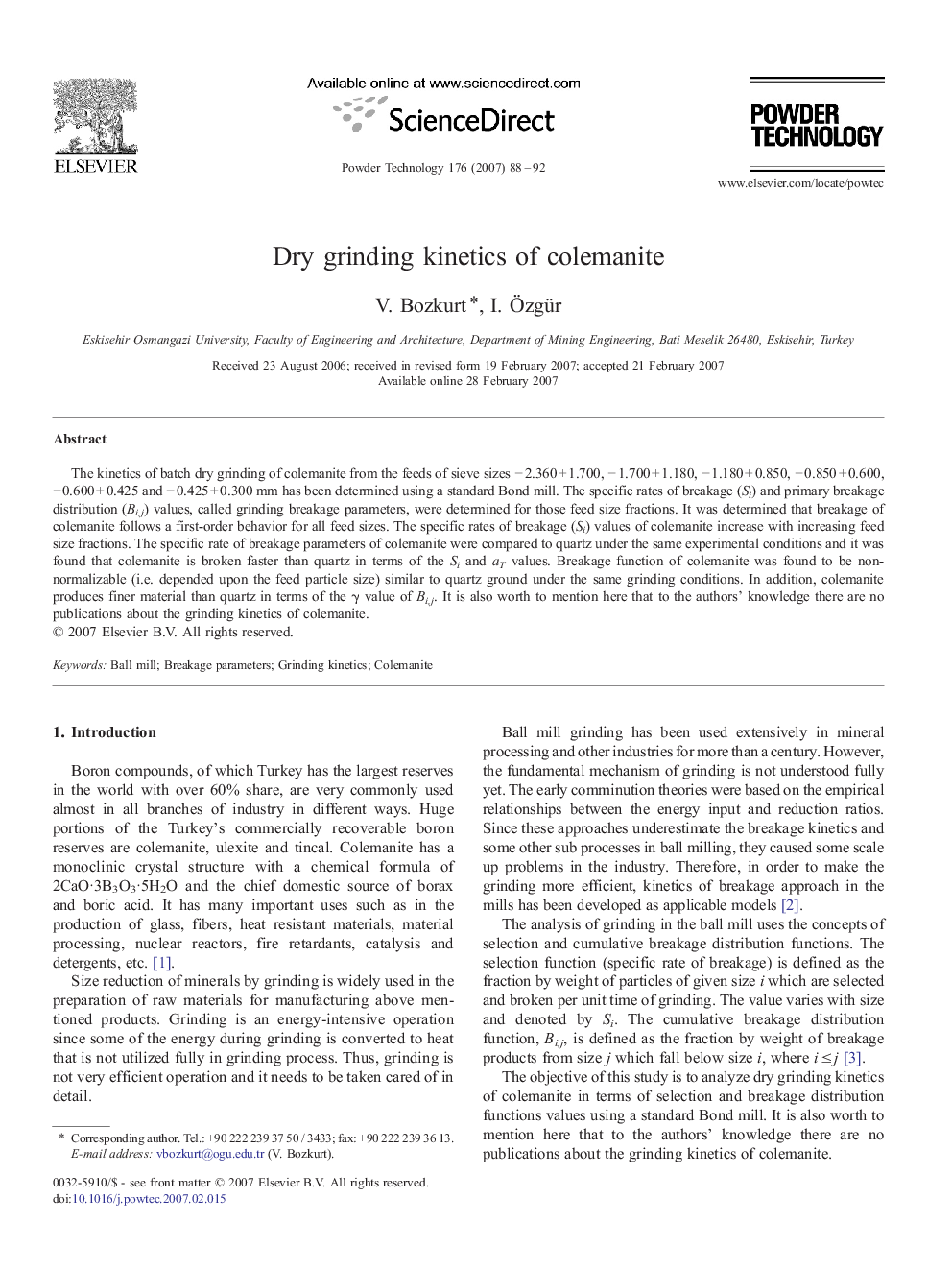| Article ID | Journal | Published Year | Pages | File Type |
|---|---|---|---|---|
| 238971 | Powder Technology | 2007 | 5 Pages |
The kinetics of batch dry grinding of colemanite from the feeds of sieve sizes − 2.360 + 1.700, − 1.700 + 1.180, − 1.180 + 0.850, − 0.850 + 0.600, − 0.600 + 0.425 and − 0.425 + 0.300 mm has been determined using a standard Bond mill. The specific rates of breakage (Si) and primary breakage distribution (Bi,j) values, called grinding breakage parameters, were determined for those feed size fractions. It was determined that breakage of colemanite follows a first-order behavior for all feed sizes. The specific rates of breakage (Si) values of colemanite increase with increasing feed size fractions. The specific rate of breakage parameters of colemanite were compared to quartz under the same experimental conditions and it was found that colemanite is broken faster than quartz in terms of the Si and aT values. Breakage function of colemanite was found to be non-normalizable (i.e. depended upon the feed particle size) similar to quartz ground under the same grinding conditions. In addition, colemanite produces finer material than quartz in terms of the γ value of Bi,j. It is also worth to mention here that to the authors' knowledge there are no publications about the grinding kinetics of colemanite.
The specific rates of breakage (Si) and primary breakage distribution (Bi,j) values of colemanite were determined and compared to quartz ground under the same grinding conditions. It was found that colemanite follows a first-order breakage behavior for all feed sizes and is broken faster than quartz. Breakage function of colemanite is non-normalizable similar to quartz.Figure optionsDownload full-size imageDownload as PowerPoint slide
